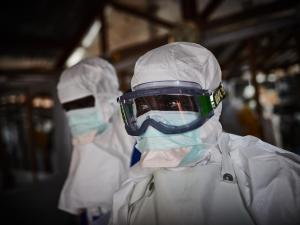Sudan Virus Disease Outbreak in Uganda
The recent outbreak of Sudan virus disease in Uganda has garnered global attention. The World Health Organization and the Ugandan government confirmed this outbreak, marking the ninth recorded since 1976. The index case (first identified case) is a 32-year-old male nurse from Kampala. As of February 11, there are nine confirmed cases, with the index case being the only reported death. This situation marks the ongoing challenges posed by viral infections in a rapidly changing world.
Background of Sudan Virus Disease
- Sudan virus disease is part of the orthoebolavirus family, similar to Ebola virus disease.
- The first outbreak occurred in southern Sudan in 1976.
- The disease is characterised by severe symptoms including fever, fatigue, and bleeding.
- There are no specific treatments or vaccines available, making outbreaks particularly concerning.
Recent Outbreak Details
The current outbreak originated from a hospital cluster and a family cluster. The first case was confirmed in a nurse, with subsequent cases linked to his wife and family members. Historical data from a 2022 outbreak in Uganda revealed a high fatality rate, with 164 cases and 77 deaths. This puts stress on the potential severity of Sudan virus disease.
Symptoms and Diagnosis
Symptoms typically begin with fever, body aches, and fatigue. As the illness progresses, patients may experience diarrhoea, vomiting, and bleeding. Laboratory testing is essential to differentiate Sudan virus disease from Ebola, given their similarities. Isolation of patients is critical to prevent further transmission.
Treatment and Vaccination Efforts
Currently, there are no established treatments or vaccines for Sudan virus disease. However, monoclonal antibodies are being explored as potential therapies. These antibodies aim to inhibit virus replication. A phase 1 vaccine trial is also underway, reflecting ongoing research into effective interventions.
Infection Control and Public Health Response
Infection prevention and control measures are vital in managing outbreaks. During the 2022 outbreak, inadequate infection control in private health facilities contributed to the spread. Effective contact tracing and isolation of symptomatic individuals are crucial for containing outbreaks. Early supportive treatment can reduce mortality rates .
Climate Change and Emerging Infections
Climate change is influencing the distribution of infectious diseases. New habitats for mosquito-borne diseases are emerging, while established diseases like dengue and West Nile virus are spreading to new regions. This shift poses additional challenges for global health.
Global Health Cooperation Challenges
International collaboration is essential to combat global health threats. However, political instability and inconsistent responses from key stakeholders hinder these efforts. The current global climate creates an environment where infections like the Sudan virus can thrive.
Month: Current Affairs - February, 2025
Category: Science & Technology Current Affairs






